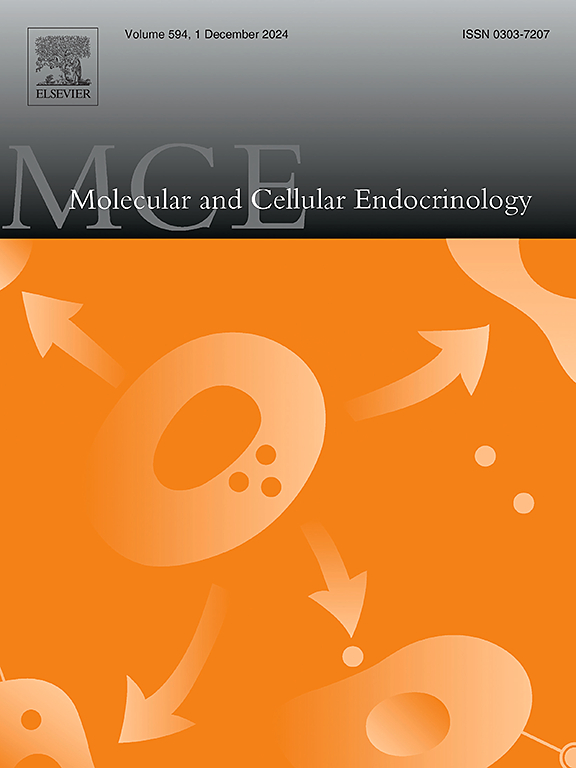The spleen-liver axis supports obesity-induced systemic and fatty liver inflammation via MDSC and NKT cell enrichment
IF 3.6
3区 医学
Q2 CELL BIOLOGY
引用次数: 0
Abstract
Obesity promotes adipose tissue inflammation and leads to impaired local but also systemic immune cell homeostasis. This chronic low-grade inflammation plays a significant role in the development of obesity-associated secondary diseases such as metabolic associated fatty liver disease or cancer. The spleen as the central organ of immune cell regulation is anatomically directly connected to the visceral adipose tissue and the liver via the portal vein circulation. However, the inter-organ crosstalk and linkage between obesity-induced systemic, hepatic and splenic immune cell dysregulation is not clearly outlined. In this study blood, spleen, and liver immune cells of non-obese wildtype vs. leptin deficient obese BTBR mice were isolated and analyzed in terms of leukocyte composition by flow cytometry. Significant differences between circulating, spleen- and liver-resident immune cell distribution revealed, that obesity-induced hepatic and systemic immune cell dysregulation is distinct from splenic immune cell reprogramming. Fatty liver inflammation was associated with splenic myeloid derived suppressor cell (MDSC) and natural killer T cell (NKT) enrichment whereas loss of hepatic T and B cells was not reflected by the splenic lymphocyte landscape. Correlation analysis confirmed a selective strong positive correlation between spleen and liver MDSC and NKT cell distribution indicating that the spleen-liver axis modulates obesity-induced immune dysregulation in a cell-specific manner. Similar results were observed in a diet-induced obesity mouse model. These data provide novel insights into the role of the spleen-liver axis in obesity-induced inflammation and foster the understanding of obesity-associated complications such as fatty liver disease and cancer.

脾-肝轴通过MDSC和NKT细胞富集支持肥胖诱导的系统性和脂肪肝炎症
肥胖促进脂肪组织炎症,导致局部和全身免疫细胞稳态受损。这种慢性低度炎症在肥胖相关继发性疾病(如代谢性脂肪性肝病或癌症)的发展中起着重要作用。脾作为免疫细胞调节的中枢器官,在解剖上通过门静脉循环与内脏脂肪组织和肝脏直接相连。然而,肥胖诱导的全身、肝脏和脾脏免疫细胞失调之间的器官间串扰和联系尚未明确概述。本研究分离了非肥胖野生型与瘦素缺乏型肥胖BTBR小鼠的血液、脾脏和肝脏免疫细胞,并用流式细胞术分析白细胞组成。循环、脾脏和肝脏免疫细胞分布的显著差异表明,肥胖诱导的肝脏和全身免疫细胞失调不同于脾免疫细胞重编程。脂肪肝炎症与脾髓源性抑制细胞(MDSC)和自然杀伤T细胞(NKT)富集有关,而肝T细胞和B细胞的损失并未反映在脾淋巴细胞景观中。相关分析证实,脾肝MDSC和NKT细胞分布之间存在选择性的强正相关,表明脾肝轴以细胞特异性的方式调节肥胖诱导的免疫失调。在饮食引起的肥胖小鼠模型中也观察到类似的结果。这些数据为脾肝轴在肥胖诱导炎症中的作用提供了新的见解,并促进了对肥胖相关并发症(如脂肪肝疾病和癌症)的理解。
本文章由计算机程序翻译,如有差异,请以英文原文为准。
求助全文
约1分钟内获得全文
求助全文
来源期刊

Molecular and Cellular Endocrinology
医学-内分泌学与代谢
CiteScore
9.00
自引率
2.40%
发文量
174
审稿时长
42 days
期刊介绍:
Molecular and Cellular Endocrinology was established in 1974 to meet the demand for integrated publication on all aspects related to the genetic and biochemical effects, synthesis and secretions of extracellular signals (hormones, neurotransmitters, etc.) and to the understanding of cellular regulatory mechanisms involved in hormonal control.
 求助内容:
求助内容: 应助结果提醒方式:
应助结果提醒方式:


